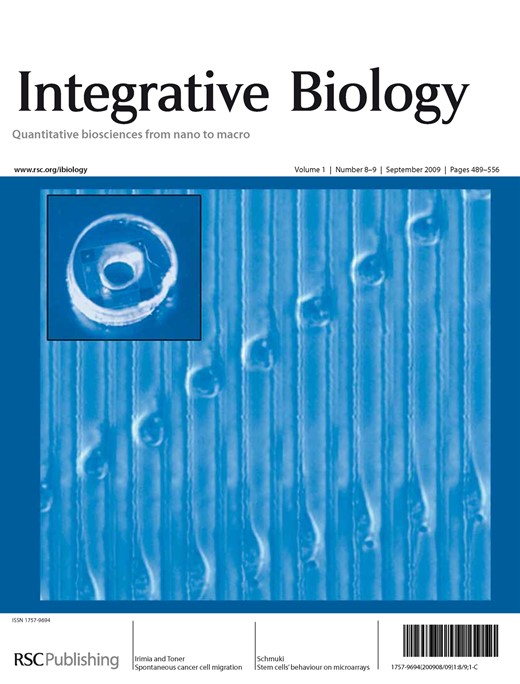-
Views
-
Cite
Cite
David A. Brafman, Samuele de Minicis, Ekihiro Seki, Kevan D. Shah, Dayu Teng, David Brenner, Karl Willert, Shu Chien, Investigating the role of the extracellular environment in modulating hepatic stellate cell biology with arrayed combinatorial microenvironments, Integrative Biology, Volume 1, Issue 8-9, September 2009, Pages 513–524, https://doi.org/10.1039/b912926j
Close - Share Icon Share
Abstract
Hepatic stellate cells (HSCs) are a major cell type of the liver that are involved in liver homeostasis. Upon liver damage, HSCs exit their normally quiescent state and become activated, leading to an increase of their proliferation, production of abnormal extracellular matrixproteins (ECMPs) and inflammatory mediators, and eventually liver fibrosis and cirrhosis. Current in vitro approaches to identify components that influence HSC biology typically investigate one factor at a time and generally ignore the complex crosstalk among the myriad of components that comprise the microenvironments of quiescent or activated HSCs. Here we describe a high throughput screening (HTS) approach to identify factors that affect HSC biology. Specifically, we integrated the use of ECMPs and signaling molecules into a combinatorial cellular microarray technology platform, thereby creating comprehensive “microenvironments”. Using this technology, we performed real-time simultaneous screening of the effects of hundreds of unique microenvironments composed of ECMPs and signaling molecules on HSC proliferation and activation. From these screens, we identified combinations of microenvironment components that differentially modulate the HSC phenotype. Furthermore, analysis of HSC responses revealed that the influences of Wntsignaling molecules on HSC fate are dependent on the ECMP composition in which they are presented. Collectively, our results demonstrate the utility of high-content, array-based screens to provide a better understanding of HSC biology. Our results indicate that array-based screens may provide an efficient means for identifying candidate signaling pathways to be targeted for anti-fibrotic therapies.



